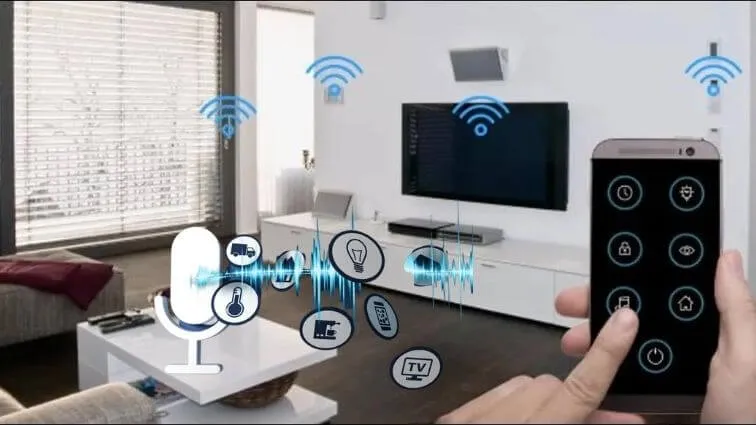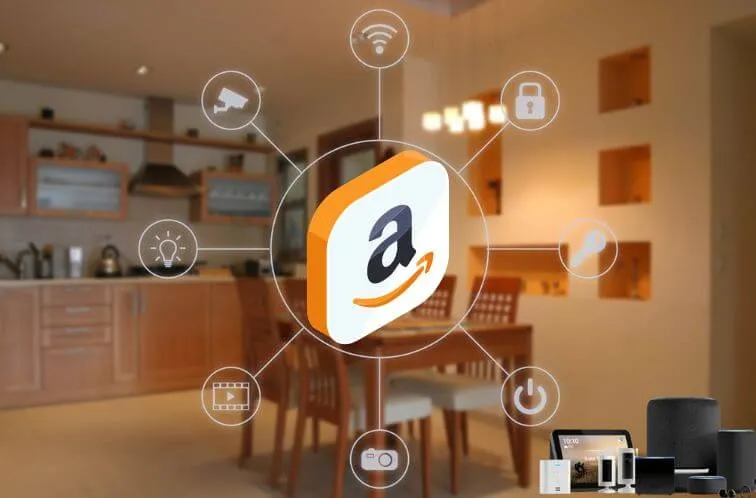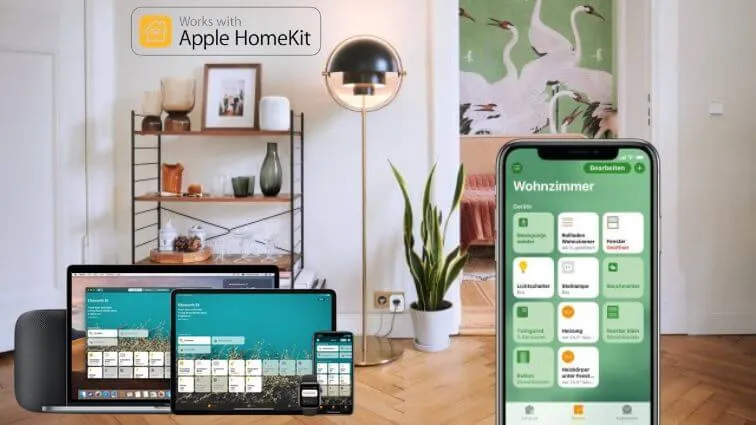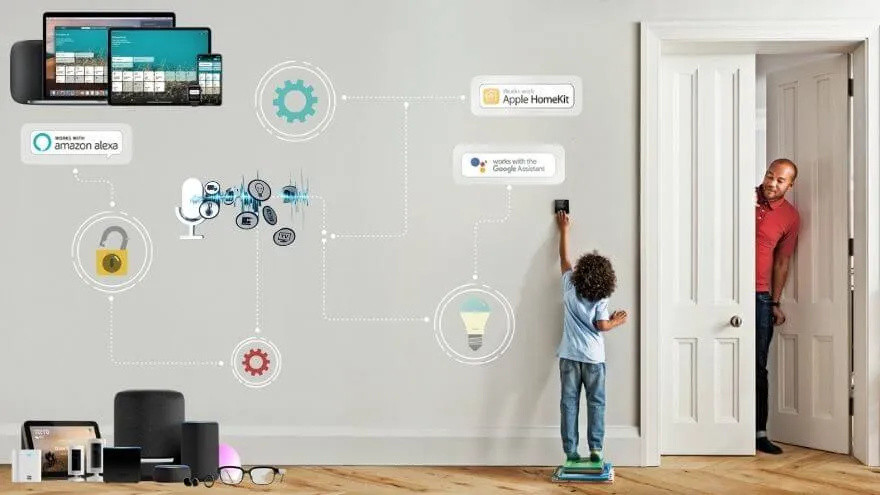The Future of the Smart Home – According to many, ambient computing is the future of electronics: this is how a smart environment works and what Amazon, Google, and Apple have in mind
For some years there has been an expression that has been circulating in the corridors of the big names in technology, just two words that sum up the near future of the customer electronics need: ” ambient computing “.
Two words that, It can be simply translated as “intelligent environment”, thanks to computers.
As has been clear for some time, however, the intelligence we are talking about is the artificial one, theAIofdigital assistants suchasAmazon Alexa,Google AssistantandApple Sirion which oursmart homesare based .
Amazon, Google and Apple are the three companies naturally candidates to share the new ambient computing market , even if they are trying with three different strategies, which could have equally different consequences on our future.
Before analyzing the vision of Amazon, Google and Apple on ambient computing, however, it is better to specify what the experts mean by these two words.
What does ambient computing mean

Ambient computing is widespread computing , obtained by spreading intelligent objects in the environment that surrounds us that collect and process data to offer answers and services, free or paid.
While traditionalcomputingis linked to a few devices with which the user acts voluntarily, such as computers or smartphones,ambient computingworks “in the background”: sensors,smart speakers,smart displaysand intelligent appliances that are constantly active and listening. ,
Which collect data on our tastes, our requests (explicit and implicit) and provide us with ever more accurate answers and ever more refined and personalized services, thanks tomachine learningprocessed by a sort of “dematerialized computer”.
Who today has a smart speaker at home connected to a smart TV, to his smartphone, to a smart IP camera is already fully inside ambient computing . But we are only at the beginning.
Ambient computing: Amazon’s vision

Amazon is today the major player in the smart speaker market , but it is not yet dominant: Google, above all, and Apple, much less, have market shares that do not allow Amazon to rest on its laurels.Amazon’s vision of ambient computing
At least at the moment, is “smart home centric”: the environment to be filled with AI is that of the home, as demonstrated by the products that the company founded by Jeff Bezos continues to offer to users
The current range of Amazon hardware includes Echosmart speakersand Echo Showsmart displays, in various formats, Blink and Ring cameras,smart plugs.
Then there are the Fire tablets and the Fire TV Stick keys through which you can access all of Amazon’s digital streaming services , but also interact with smart devices.
Recently, in the United States, Amazon presented its first smart TV and announced two new innovative products: the Astro robot and the Echo Show 15 .
The first is a strange cross between a puppy and the Pixar character Wall-E, equipped with microphones, video camera and autonomous driving in the home.
While the second is a huge 15-inch smart display to keep on the wall to control everything. home automation.
Without prejudice toAmazon Echo Auto, a device that is little more than a hands-free microphone for the Alexa app for smartphones, the entire Amazon smart ecosystem revolves around a well-defined “ambient”: theuser’s home.
Ambient computing: Google’s vision
Google, compared to Amazon, does not have such a massive presence in users’ homes: its Nest devices , despite having good market penetration, do not reach the Echo numbers.
The Mountain View company, however, has a huge advantage: it’s inside 3 billion Android smartphones , scattered around the world.
According to Google, ambient computing is by no means limited to the home, within which, however, Google does everything to enter, but it is virtually the whole world
In fact, every smartphone with an Android operating system is part of a huge network of devices that collect information that can then be useful to other users, with other smartphones or smart devices .
An example of this approach is the Google Maps navigator , which even before departure tells us if we will find traffic on the route thanks to the data collected from the smartphones of those who are making the same route, from before us.
We can learn this information by opening the smartphone, or by asking oursmart speakerwith Google Assistant how long it takes to go from home to work.
In the domestic environment, therefore, Google also brings the data collected in the extra-domestic environment.
Unlike Amazon, then, Google has been underway for years massive plans to get inside cars (another environment where we spend more and more time): the easiest to implement, in the short term, is Android Automotive.
The new operating system for cars from do not confuse with Android Auto, while the most difficult is Waymo’s autonomous driving .
Inside the house, on the other hand, Google imagines an environment similar to that proposed by Amazon and with products practically mirroring those of the competitor.
But in fewer numbers: the Nest Minismart speakers, Nest Audio, the Nest Hub and Nest Hub Maxsmart displaysand the Wired and wireless Nest Cam cameras, and there are Nest thermostats, which don’t have an equivalent in the Amazon Echo range.
Also in this case, the information collected by the microphones and cameras of the Nest hardware can be viewed on other devices, such as smartphones and smart TVs with the Android TV operating system, which are millions in the world.
Ambient computing: Apple’s vision

The saying says that between the two litigants the third enjoys, but this does not seem to be the case with Apple: the Cupertino company, at the end of 2021, has a penetration of the smart home market of just 5% and it does not seem that in 2022 can do much better.
Apple lacks a line of truly smart products for the masses: the only two Apple-branded products are Homepod and Homepod Mini, and they are not even sold on all markets in which Apple is present.
Then there are a few dozen products from other companies, compatible with Apple HomeKit (Apple’s smart ecosystem), but we cannot speak of a real Apple range for ambient computing .
According to Bloomberg’s Mark Gurman, however, Apple is thinking of a 15-inch iPad to be placed on the market as a direct competitor of the Amazon Echo Show 15. Fascinating hypothesis, but how much would such a device cost?
The voice assistant Apple Siri is present on all iPhones, with a good portion of iOS users who use it at least occasionally and now find it familiar.
Apple, therefore, would already have the foundations to enter the ambient computing market as a protagonist (or at least as a co-star)
But it is definitely missing one thing: a range of cheap products, priced so low as to invite potential buyers to buy one. and to put it at home.
When we talk about ambient computing and intelligent environment, in fact, quantity is at least as important as quality . Amount of microphones, cameras and sensors scattered around the house, of course.
Hopefully, you are like the The Future of the Smart Home: Intelligent Environment and we are always open to your problems, questions, and suggestions, so feel free to Comment on us by filling this.
This is a free service that we offer, We read every message we receive. Tell those we helped by sharing our posts with friends

Pradeep Sharma is a author the mind behind Techjustify, where I craft insightful blogs on technology, digital tools, gaming, AI, and beyond. With years of experience in digital marketing and a passion for tech innovation, I aim to simplify complex topics for readers worldwide.
My mission is to empower individuals with practical knowledge and up-to-date insights, helping them make informed decisions in the ever-evolving digital landscape.




